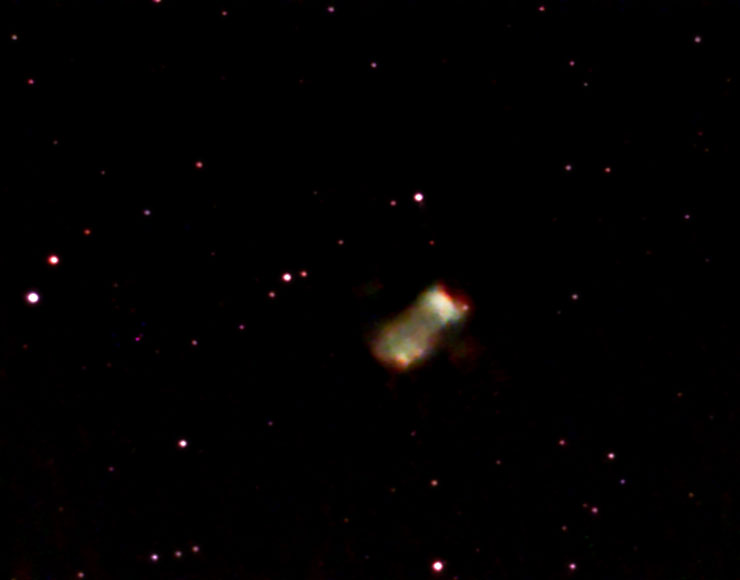
Little Dumbbell Nebula
The Little Dumbbell Nebula (also known as Messier 76, NGC 650/651, the Barbell Nebula, or the Cork Nebula) is a planetary nebula in the constellation Perseus. It was discovered by Pierre Méchain in 1780 and included in Charles Messier's catalog of comet-like objects as number 76. It was recognized as a planetary nebula in 1918 by the astronomer Heber Doust Curtis. M76's distance is not well known, with estimates ranging from 1,700 to 15,000 light years, and consequently its dimensions are also not well known. The nebula shines at an apparent magnitude of +10.1 with a central star of magnitude +16.6. This star, whose expanding outer layers form the present nebula, has a surface temperature of 60,000 kelvins. The Little Dumbbell Nebula got its name from its resemblance to the Dumbbell Nebula (M27) in Vulpecula. It was originally thought to consist of two separate nebulae and was thus given two catalog numbers in the NGC, 650 and 651. It is one of the faintest and hardest to see objects in Messier's list.